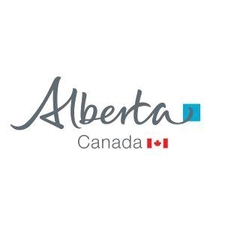NTS
Type of resources
Available actions
Topics
Keywords
Contact for the resource
Provided by
Years
Formats
Representation types
Update frequencies
status
Service types
-
This service is based on the National Topographic System (NTS). For more details visit http://www.nrcan.gc.ca/earth-sciences/geography/topographic-information/maps/9767 \ Ce service est basé sur le Système national de référence cartographique (SNRC).Pour plus de détails consulter http://www.rncan.gc.ca/sciences-terre/geographie/information-topographique/cartes/9768
-

BCGS 1:10,000 scale grid. The British Columbia Geographic System is a geographic system in which the coverage in minutes and seconds of longitude is double the coverage in minutes and seconds of latitude for sheets at all scales
-

BCGS 1:20,000 scale grid. The British Columbia Geographic System is a geographic system in which the coverage in minutes and seconds of longitude is double the coverage in minutes and seconds of latitude for sheets at all scales
-

Index Grid for NTS 1:250,000 scale maps
-

BCGS 1:2,500 scale grid, North Amercian Datum 1983. The British Columbia Geographic System is a geographic system in which the coverage in minutes and seconds of longitude is double the coverage in minutes and seconds of latitude for sheets at all scales
-

British Columbia Geographic System 1:5,000 scale mapsheet grid. Each mapsheet is one fourth of a 1:10,000 mapsheet numbered 1 through 4. The neatlines were defined and created in geographic units and reprojected to BC Albers. Each of the mapsheets is 0.75 minutes (45 seconds) latitude by 1.50 minutes (90 seconds) longitude. The British Columbia Geographic System is a geographic system in which the coverage in minutes and seconds of longitude is double the coverage in minutes and seconds of latitude for sheets at all scales
-

BCGS 1:2,500 scale grid, North Amercian Datum 1927. The British Columbia Geographic System is a geographic system in which the coverage in minutes and seconds of longitude is double the coverage in minutes and seconds of latitude for sheets at all scales.This particular grid was generated in the older NAD27 datum to replicate historic Water Rights paper maps used by surface water rights management program
-

The Phase 1 (Broad Scale) Forest Inventory was initiated in 1949 and completed by 1956. The Phase 1 (Broad Scale) Forest Inventory included all publicly owned forested lands in the province except Indian lands, national parks, and an area known as the Rocky Mountains Forest Reserve. The Phase 1 (Broad Scale) Forest Inventory was used to define lands suitable for agriculture, to determine timber harvest levels and plan forest protection and timber and industrial development. Through aerial photo interpretation, land was classified as productive, potentially productive, or non-productive. On productive forest land, homogeneous groups of trees were classified by 'cover types'. Cover types included crown density, height and tree species. Burned, harvested or cultivated land was identified as potentially productive. Non-productive lands included areas with organic soils, barren rock and lakes. No ages or site classes are associated with the polygons. The minimum polygon size was 65 ha. These maps are not available as geo-referenced rectified images or GIS-ready data.
-

This cartographic quality series of 1:1 000 000 scale colour maps cover the provincial extent of Alberta. The primary provincial base map displays the Alberta Township System (ATS), major hydrographic features, municipalities, major roads, railways and select geoadministrative features (parks, reserves, etc.). In addition to the primary provincial base map, this series includes various themes that overlay the primary base map. The update of this map series is based on the provincial Base Features Access Update Program that has an approximate 5 year update cycle. Each individual map sheet is provided in Adobe .pdf format.
-

Topographic maps produced by Natural Resources Canada conform to the National Topographic System (NTS) of Canada. Indexes are available in three standard scales: 1:1,000,000, 1:250,000 and 1:50,000. The area covered by a given mapsheet is determined by its latitude and longitude. 1:1,000,000 mapsheets are identified by a combination of three numbers (e.g. 098). 1:250,000 mapsheets are identified by a combination of numbers, and letters ranging from A through P (e.g. 098C). Sixteen smaller segments (1 to 16) form blocks used for 1:50,000 mapping (e.g. 098C03).
 Arctic SDI catalogue
Arctic SDI catalogue